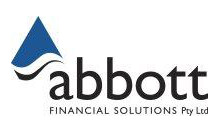As the end of financial year fast approaches, here are three main factors to keep in mind. By being prepared, particularly with your admin, having an awareness of what you can claim and considering any capital losses or gains, you will be well positioned to make the most of EOFY.

Compile your records and receipts
This time of year either has us patting ourselves on the back for our good record keeping throughout the last 12 months, or vowing to have better systems in place next financial year. If it’s the latter, there are many great apps you can utilise to make it easier to keep track.
In the ATO app, there is a myDeductions section to help keep your records in one place, and Expensify and Shoeboxed are also popular choices. These apps are free, though the latter two have paid plans that allow for more features (including the ability to integrate with accounting software such as QuickBooks).
Whichever system you have used, get prepared by compiling your records and receipts or looking at your app. Having this information at the ready will reduce the time it will take to prepare your tax return and ensure you don’t miss any expenses from the past year.
Know what to claim
Whether you’re new to property investment or have owned an investment property for a while, it’s always a good idea to be aware of what you can claim come tax time. This can be a bit of a process, given the introduction of different tax deduction rules, but here are some key things to focus on.
Immediate expenses
As a property investor, you can claim expenses such as council rates, body corporate fees and charges, loan expenses such as interest paid and bank fees, as well as costs related to advertising, accounting, and alterations. Costs relates to the investment property’s repairs and maintenance, such as cleaning, gardening, or pest control, can also be claimed.
You can also claim expenses that relate to the running of the property, such as phone calls to the tenants or real estate agents and internet charges. However, these must be portioned according to how often they were used for this purpose, rather than personal use – again, this is why good record keeping throughout the year is helpful in saving time at EOFY.
Depreciation
According to research from BMT, up to 80% of property investors fail to take full advantage of claiming tax depreciation.i Property depreciation is the second-highest deduction available for property investors, second to mortgage interest repayments, so not claiming as much as you can is a lost opportunity.
Depreciation is annual decline in the value of the property’s structure and permanent fixtures such as the oven/stove, dishwasher, carpet, heater, and air-conditioning unit. You can claim interest for all qualifying depreciating items on investment properties purchased from 9 May 2017 onwards.
You can also claim a depreciation deduction on the construction costs of 2.5% a year for a period of 40 years – this is if your investment property was built after 16 September 1987. The same applies to renovations done after 27 February 1992. The depreciation deductions of the property structure and permanent fixtures can be complex, so it can be best to seek advice.
It’s important to note that if the property was used for personal use (such as your holiday home), interest payments cannot be claimed as an expense for this period.
Consider negative gearing losses and capital gains
Negative gearing, in which the income from the investment is less than the expenses are, is also something to keep in mind at EOFY. If you have had losses, this will reduce your total tax payable.
On the other hand, if you’ve sold your investment property and made a capital gain on the sale this financial year, this will be taxed. Provided you have owned your investment property for over 12 months, you can apply for the 50% capital gains tax (CGT) discount.
Should you have any questions about your current property or finance as we approach June 30, don’t hesitate to get in touch.
i https://www.bmtqs.com.au/bmt-insider/tax-depreciation-facts/
Important: This provides general information and hasn’t taken your circumstances into account. It’s important to consider your particular circumstances before deciding what’s right for you. Although the information is from sources considered reliable, we do not guarantee that it is accurate or complete. You should not rely upon it and should seek qualified advice before making any investment decision. Except where liability under any statute cannot be excluded, we do not accept any liability (whether under contract, tort or otherwise) for any resulting loss or damage of the reader or any other person.
Any information provided by the author detailed above is separate and external to our business and our Licensee. Neither our business nor our Licensee takes any responsibility for any action or any service provided by the author. Any links have been provided with permission for information purposes only and will take you to external websites, which are not connected to our company in any way. Note: Our company does not endorse and is not responsible for the accuracy of the contents/information contained within the linked site(s) accessible from this page.


